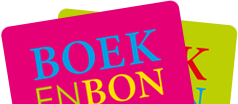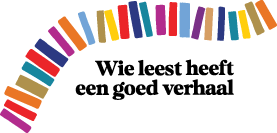Lezersrecensie
Quite a nice book
Quite a nice book. Most of the books that I've read about feminism so far focus on Western society.
This book provides a nice mix of very high-level problems that Melinda has faced in her own (privileged) life as a catholic white woman in western society (working in a tech company) and problems that woman from the margins of society in Africa and Asia.
The mixing of the perspectives was quite interesting. Somewhere halfway through the book, I got a bit confused about what she was exactly trying to accomplish. What is the goal of the book? Describing her personal encounters with inequality? Telling the stories of the women she met for the work for her foundation? Is there a red line? It became a bit confusing. But towards the end, she ties all the different stories quite nicely together by pointing out that it's all about culture, cultural change, and love. Not to solve equality, but to make people connect with each other.
Personally, the stories of how her foundation empowered women in Africa and India spoke the loudest to me. Probably because beforehand, I didn't really have a clear vision of what was going on there. It was really quite inspirational to see how they managed to establish a cultural change in those areas. E.g. by organising role-playing activities (switching gender roles for a day), to grow empathy and understanding and then let change naturally evolve from that lesson. Or how safe spaces and community centers brought women together and helped them to empower themselves, instead of the artificial influence of a large Western charity.
People themselves usually know best what needs to change, but they are held back by fear or practical issues. By providing them safety and networking opportunities, they can start to bring about change themselves.
I especially like the scene where prof. Hans Rosling drew the 'geography of poverty' out for Melinda. He had a simple blanc sheet on which he drew a crossing of two roads from East to West and from South to North. Then he added a river as a diagonal and he explained that the people that are the closest to the point where the roads and the river cross will probably be okay. They are close to the flow of travel and trade (or the flow of life). But the people on the margins of the map. They will suffer the most. We must try to include them as well, so they can be connected to the flow.
This book provides a nice mix of very high-level problems that Melinda has faced in her own (privileged) life as a catholic white woman in western society (working in a tech company) and problems that woman from the margins of society in Africa and Asia.
The mixing of the perspectives was quite interesting. Somewhere halfway through the book, I got a bit confused about what she was exactly trying to accomplish. What is the goal of the book? Describing her personal encounters with inequality? Telling the stories of the women she met for the work for her foundation? Is there a red line? It became a bit confusing. But towards the end, she ties all the different stories quite nicely together by pointing out that it's all about culture, cultural change, and love. Not to solve equality, but to make people connect with each other.
Personally, the stories of how her foundation empowered women in Africa and India spoke the loudest to me. Probably because beforehand, I didn't really have a clear vision of what was going on there. It was really quite inspirational to see how they managed to establish a cultural change in those areas. E.g. by organising role-playing activities (switching gender roles for a day), to grow empathy and understanding and then let change naturally evolve from that lesson. Or how safe spaces and community centers brought women together and helped them to empower themselves, instead of the artificial influence of a large Western charity.
People themselves usually know best what needs to change, but they are held back by fear or practical issues. By providing them safety and networking opportunities, they can start to bring about change themselves.
I especially like the scene where prof. Hans Rosling drew the 'geography of poverty' out for Melinda. He had a simple blanc sheet on which he drew a crossing of two roads from East to West and from South to North. Then he added a river as a diagonal and he explained that the people that are the closest to the point where the roads and the river cross will probably be okay. They are close to the flow of travel and trade (or the flow of life). But the people on the margins of the map. They will suffer the most. We must try to include them as well, so they can be connected to the flow.
1
Reageer op deze recensie














